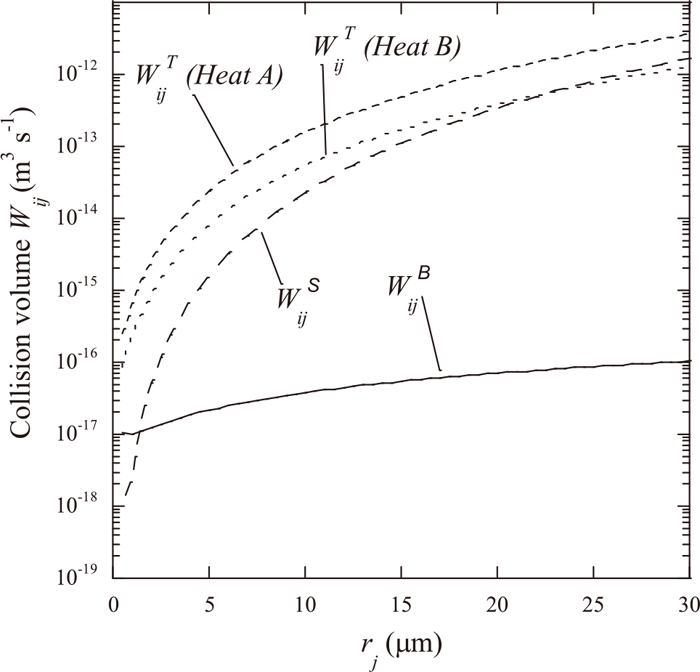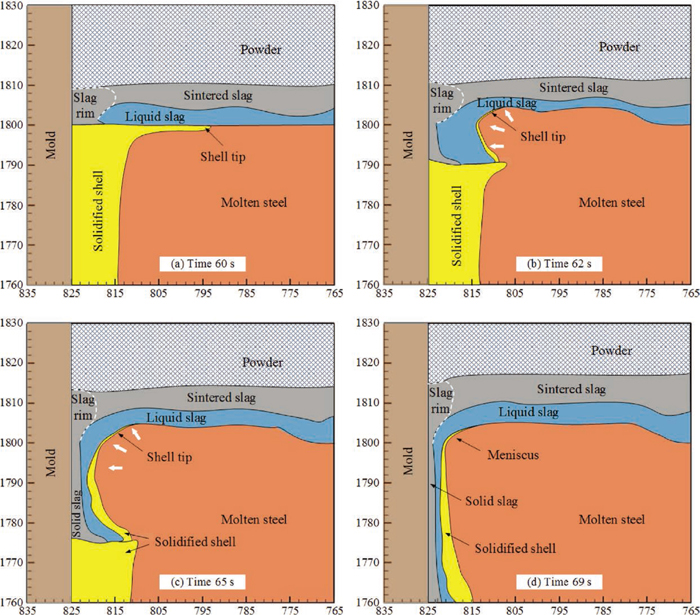Volume 58, Issue 2
Displaying 1-28 of 28 articles from this issue
- |<
- <
- 1
- >
- >|
Publication Data
-
2018 Volume 58 Issue 2 Pages Cover-
Published: February 15, 2018
Released on J-STAGE: February 17, 2018
Download PDF (432K) -
2018 Volume 58 Issue 2 Pages Editorial-
Published: February 15, 2018
Released on J-STAGE: February 17, 2018
Download PDF (572K) -
2018 Volume 58 Issue 2 Pages Contents-
Published: February 15, 2018
Released on J-STAGE: February 17, 2018
Download PDF (525K)
Review
Steelmaking
-
Article type: Review
2018 Volume 58 Issue 2 Pages 201-210
Published: February 15, 2018
Released on J-STAGE: February 17, 2018
Advance online publication: December 21, 2017Download PDF (1713K) Full view HTML
Regular Articles
Fundamentals of High Temperature Processes
-
Article type: Regular Article
2018 Volume 58 Issue 2 Pages 211-219
Published: February 15, 2018
Released on J-STAGE: February 17, 2018
Download PDF (948K) Full view HTML -
Article type: Regular Article
2018 Volume 58 Issue 2 Pages 220-226
Published: February 15, 2018
Released on J-STAGE: February 17, 2018
Advance online publication: December 27, 2017Download PDF (666K) Full view HTML
Ironmaking
-
Article type: Regular Article
2018 Volume 58 Issue 2 Pages 227-235
Published: February 15, 2018
Released on J-STAGE: February 17, 2018
Download PDF (896K) Full view HTML -
Article type: Regular Article
2018 Volume 58 Issue 2 Pages 236-243
Published: February 15, 2018
Released on J-STAGE: February 17, 2018
Advance online publication: December 21, 2017Download PDF (1240K) Full view HTML -
Article type: Regular Article
2018 Volume 58 Issue 2 Pages 244-252
Published: February 15, 2018
Released on J-STAGE: February 17, 2018
Advance online publication: December 07, 2017Download PDF (1322K) Full view HTML -
Article type: Regular Article
2018 Volume 58 Issue 2 Pages 253-258
Published: February 15, 2018
Released on J-STAGE: February 17, 2018
Download PDF (1864K) Full view HTML -
Article type: Regular Article
2018 Volume 58 Issue 2 Pages 259-266
Published: February 15, 2018
Released on J-STAGE: February 17, 2018
Download PDF (1520K) Full view HTML -
Article type: Regular Article
2018 Volume 58 Issue 2 Pages 267-273
Published: February 15, 2018
Released on J-STAGE: February 17, 2018
Advance online publication: December 12, 2017Download PDF (1297K) Full view HTML -
Article type: Regular Article
2018 Volume 58 Issue 2 Pages 274-281
Published: February 15, 2018
Released on J-STAGE: February 17, 2018
Download PDF (630K) Full view HTML -
Article type: Regular Article
2018 Volume 58 Issue 2 Pages 282-291
Published: February 15, 2018
Released on J-STAGE: February 17, 2018
Advance online publication: December 12, 2017Download PDF (2158K) Full view HTML
Steelmaking
-
Article type: Regular Article
2018 Volume 58 Issue 2 Pages 292-298
Published: February 15, 2018
Released on J-STAGE: February 17, 2018
Advance online publication: December 19, 2017Download PDF (1025K) Full view HTML
Casting and Solidification
-
Article type: Regular Article
2018 Volume 58 Issue 2 Pages 299-308
Published: February 15, 2018
Released on J-STAGE: February 17, 2018
Advance online publication: December 13, 2017Download PDF (1698K) Full view HTML
Forming Processing and Thermomechanical Treatment
-
Article type: Regular Article
2018 Volume 58 Issue 2 Pages 309-315
Published: February 15, 2018
Released on J-STAGE: February 17, 2018
Download PDF (946K) Full view HTML
Surface Treatment and Corrosion
-
Article type: Regular Article
2018 Volume 58 Issue 2 Pages 316-322
Published: February 15, 2018
Released on J-STAGE: February 17, 2018
Download PDF (1704K) Full view HTML
Transformations and Microstructures
-
Article type: Regular Article
2018 Volume 58 Issue 2 Pages 323-332
Published: February 15, 2018
Released on J-STAGE: February 17, 2018
Download PDF (1884K) Full view HTML -
Article type: Regular Article
2018 Volume 58 Issue 2 Pages 333-339
Published: February 15, 2018
Released on J-STAGE: February 17, 2018
Download PDF (1085K) Full view HTML
Mechanical Properties
-
Article type: Regular Article
2018 Volume 58 Issue 2 Pages 340-348
Published: February 15, 2018
Released on J-STAGE: February 17, 2018
Advance online publication: December 12, 2017Download PDF (1725K) Full view HTML -
Article type: Regular Article
2018 Volume 58 Issue 2 Pages 349-358
Published: February 15, 2018
Released on J-STAGE: February 17, 2018
Download PDF (3098K) Full view HTML -
Article type: Regular Article
2018 Volume 58 Issue 2 Pages 359-363
Published: February 15, 2018
Released on J-STAGE: February 17, 2018
Download PDF (1986K) Full view HTML
Note
Fundamentals of High Temperature Processes
-
Article type: Note
2018 Volume 58 Issue 2 Pages 364-366
Published: February 15, 2018
Released on J-STAGE: February 17, 2018
Advance online publication: December 13, 2017Download PDF (812K) Full view HTML -
Article type: Note
2018 Volume 58 Issue 2 Pages 367-369
Published: February 15, 2018
Released on J-STAGE: February 17, 2018
Download PDF (556K) Full view HTML
Ironmaking
-
Article type: Note
2018 Volume 58 Issue 2 Pages 370-372
Published: February 15, 2018
Released on J-STAGE: February 17, 2018
Advance online publication: December 15, 2017Download PDF (396K) Full view HTML
Mechanical Properties
-
Article type: Note
2018 Volume 58 Issue 2 Pages 373-375
Published: February 15, 2018
Released on J-STAGE: February 17, 2018
Download PDF (678K) Full view HTML
Physical Properties
-
Article type: Note
2018 Volume 58 Issue 2 Pages 376-378
Published: February 15, 2018
Released on J-STAGE: February 17, 2018
Download PDF (531K) Full view HTML
- |<
- <
- 1
- >
- >|


 ) was newly developed in the framework of the Compound Energy Formalism (CEF). Preferred substitution of Al atoms to tetrahedral sites in the SFCA solution was verified by X-ray absorption near edge structure (XANES) analysis. On considering crystallographic information in particular the short-range-ordering nature in the SFCA solution, the
) was newly developed in the framework of the Compound Energy Formalism (CEF). Preferred substitution of Al atoms to tetrahedral sites in the SFCA solution was verified by X-ray absorption near edge structure (XANES) analysis. On considering crystallographic information in particular the short-range-ordering nature in the SFCA solution, the  structure was considered for modeling the SFCA solution. The optimized Gibbs energies of all end-members can successfully reproduce the experimental single phase region of the SFCA solution.
structure was considered for modeling the SFCA solution. The optimized Gibbs energies of all end-members can successfully reproduce the experimental single phase region of the SFCA solution.




